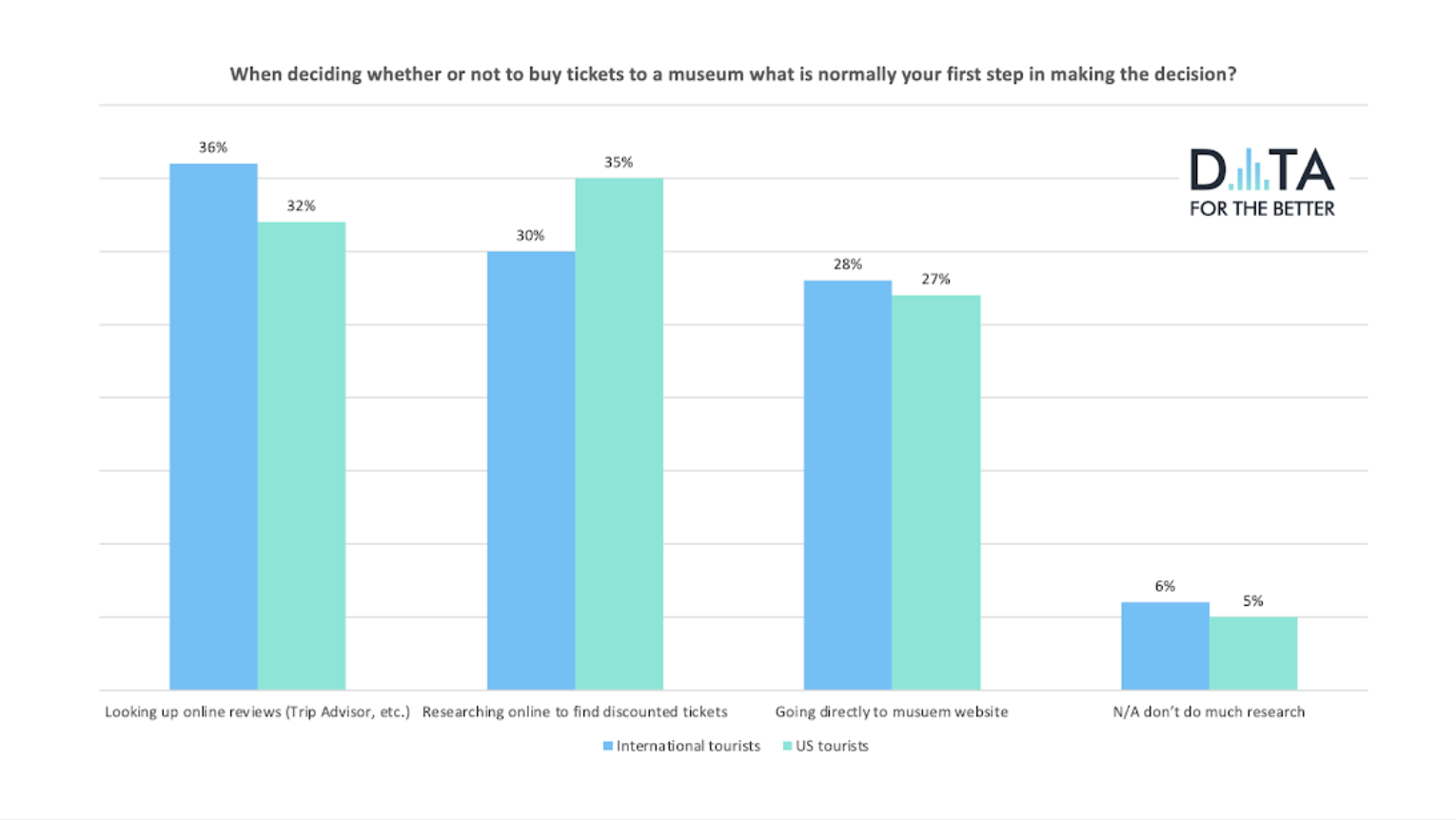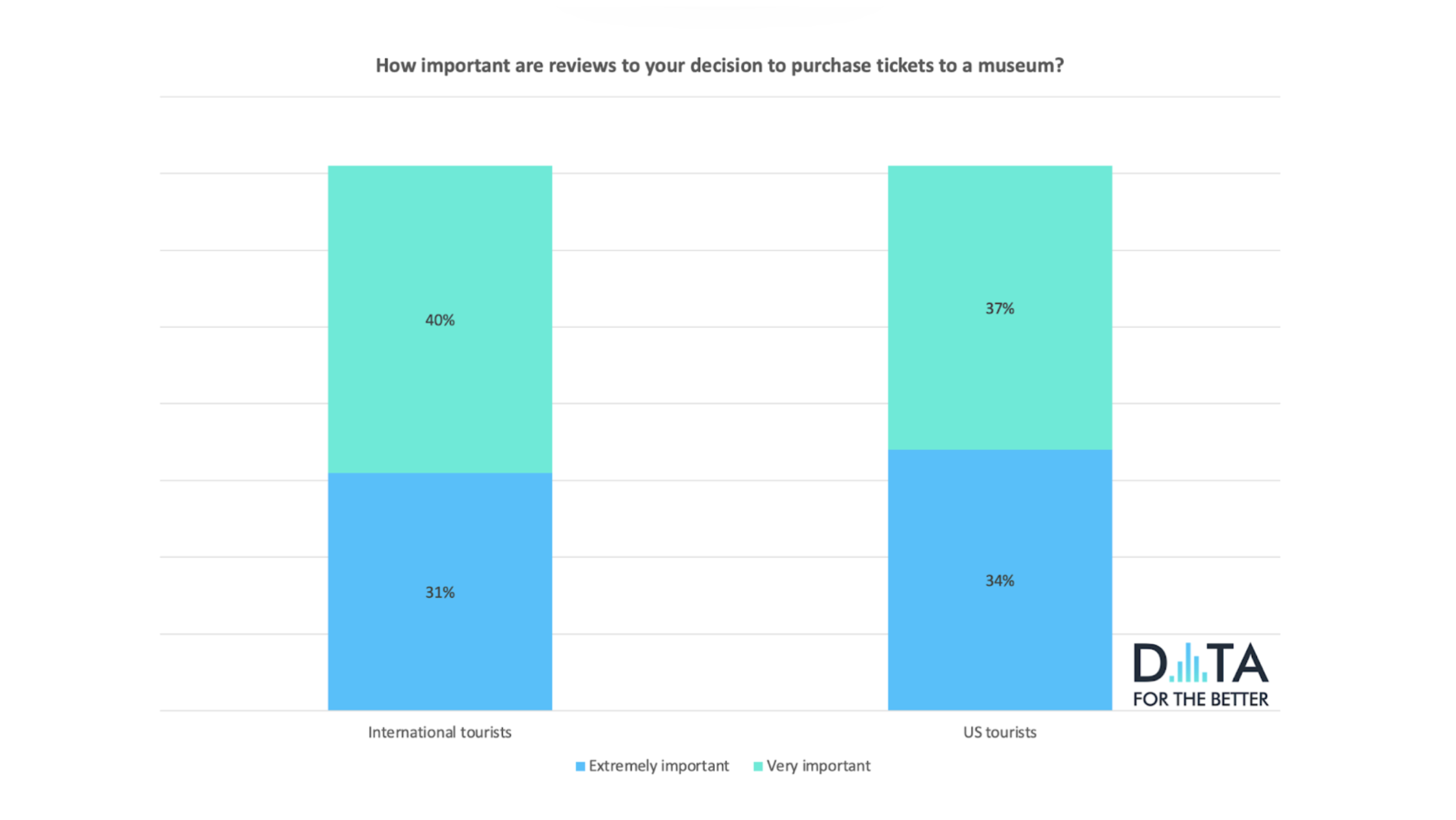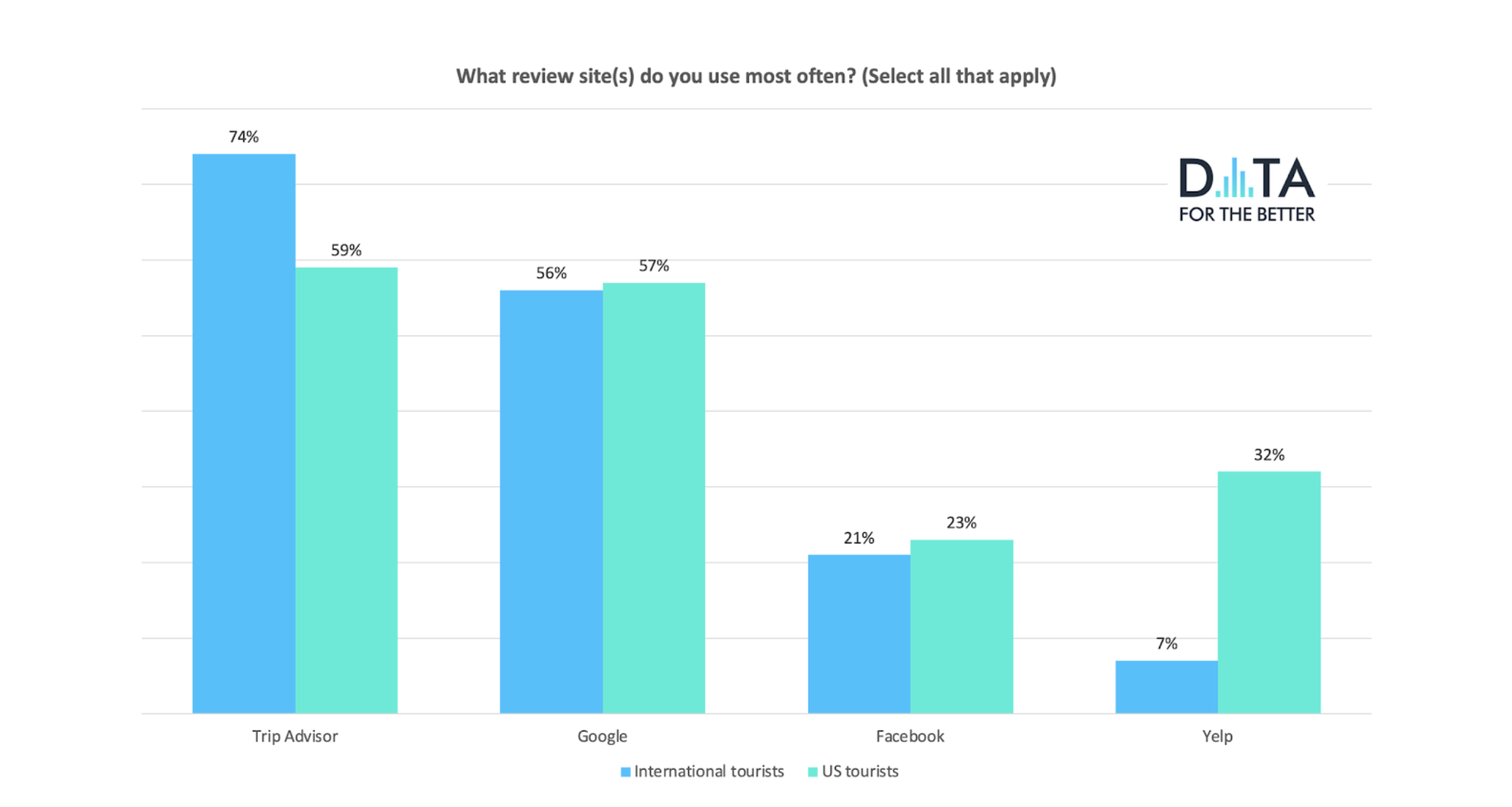In today’s digital world, online reviews have become a cornerstone of decision-making for tourists, often carrying as much weight as ticket prices. For museums, a strong online presence with glowing reviews can be the difference between making it onto a visitor’s itinerary or being overlooked entirely.
When tourists are planning their activities in a new city, they’re inundated with choices. Reviews act as a trusted guide, helping them navigate the overwhelming options for dining, shopping, hotels, and, of course, cultural experiences like museums. Data shows that for both international and U.S. tourists, the most common first step in deciding whether to visit a museum is to check online reviews. Platforms like TripAdvisor and Google dominate this space, with 36% of international tourists and 32% of U.S. tourists relying on reviews as their initial research step.

Interestingly, while reviews lead the way for international visitors, U.S. tourists are slightly more likely (35%) to prioritize finding discounted tickets. Even so, reviews and pricing go hand in hand when it comes to influencing purchasing decisions. For museums, this means that excelling in both areas—strong reviews and competitive pricing—is essential to attracting visitors.

The importance of reviews becomes even clearer when considering their overall impact. A staggering 71% of both tourist groups report that reviews are either “extremely” or “very important” in their decision to buy tickets. With countless options available, tourists use reviews as a critical tool to create their itineraries, and museums with subpar feedback risk being left off the list entirely.
Where Are Tourists Turning for Reviews?

TripAdvisor stands out as the most influential platform, with 74% of international tourists and 59% of U.S. tourists relying on it. Google follows closely, serving as a primary resource for 57% of U.S. tourists and 56% of international visitors. While platforms like Facebook (20%) and Yelp (32% for U.S. tourists) play a smaller role, they shouldn’t be ignored altogether.
What Museums Can Do to Leverage Reviews
Given the undeniable impact of reviews, museum marketing teams should make review monitoring and collection a top priority. Regularly check platforms like TripAdvisor and Google—where the majority of reviews are concentrated—not only to ensure strong ratings but also to gather valuable customer feedback. Insights from reviews can pinpoint areas for improvement, ultimately leading to a better visitor experience and, in turn, better reviews. Additionally, include prompts throughout the museum and within the digital ticketing process to encourage patrons to leave a review.
In a highly competitive tourism market, where reviews and pricing are the most significant drivers of ticket sales, museums that prioritize these areas will have a clear advantage. By engaging with reviews, addressing feedback, and optimizing experiences, museums can ensure they remain a must-visit destination for both local and international audiences.
All highlighted data was collected via an online survey to domestic and US tourists in September 2024.
